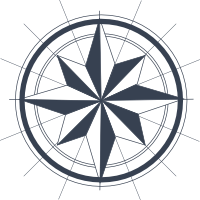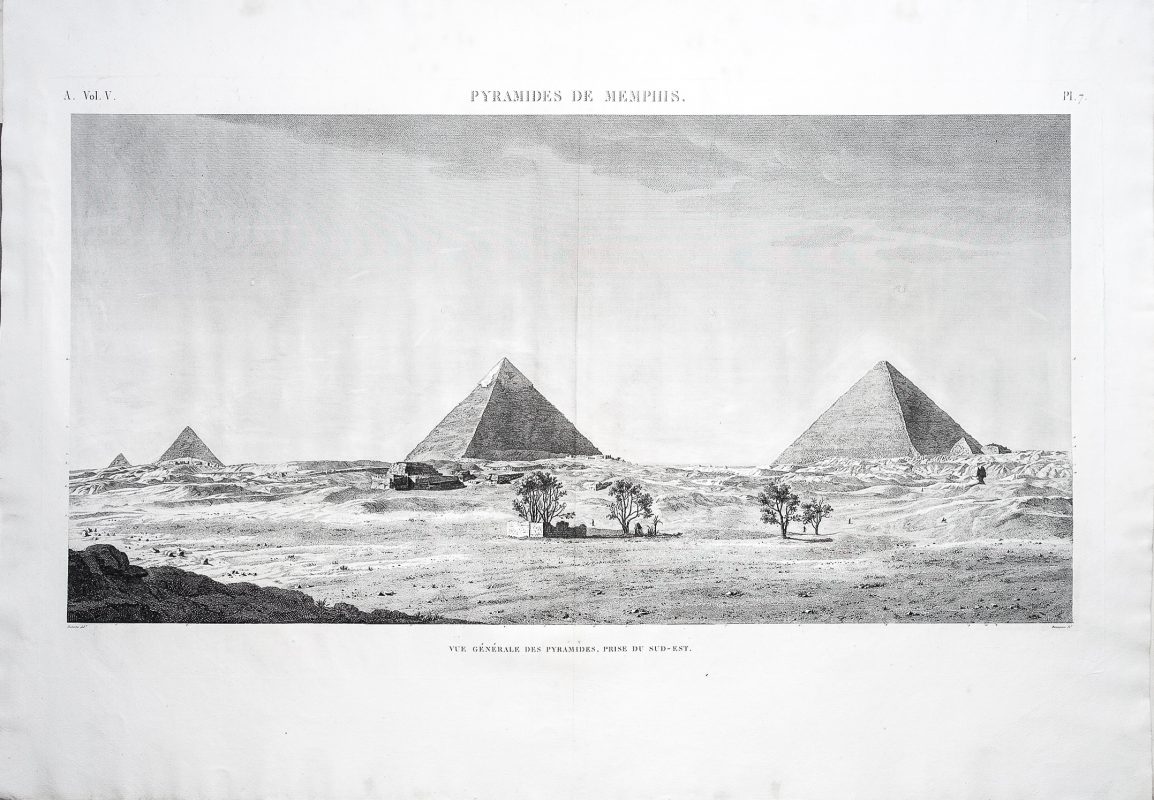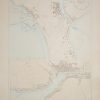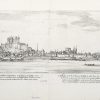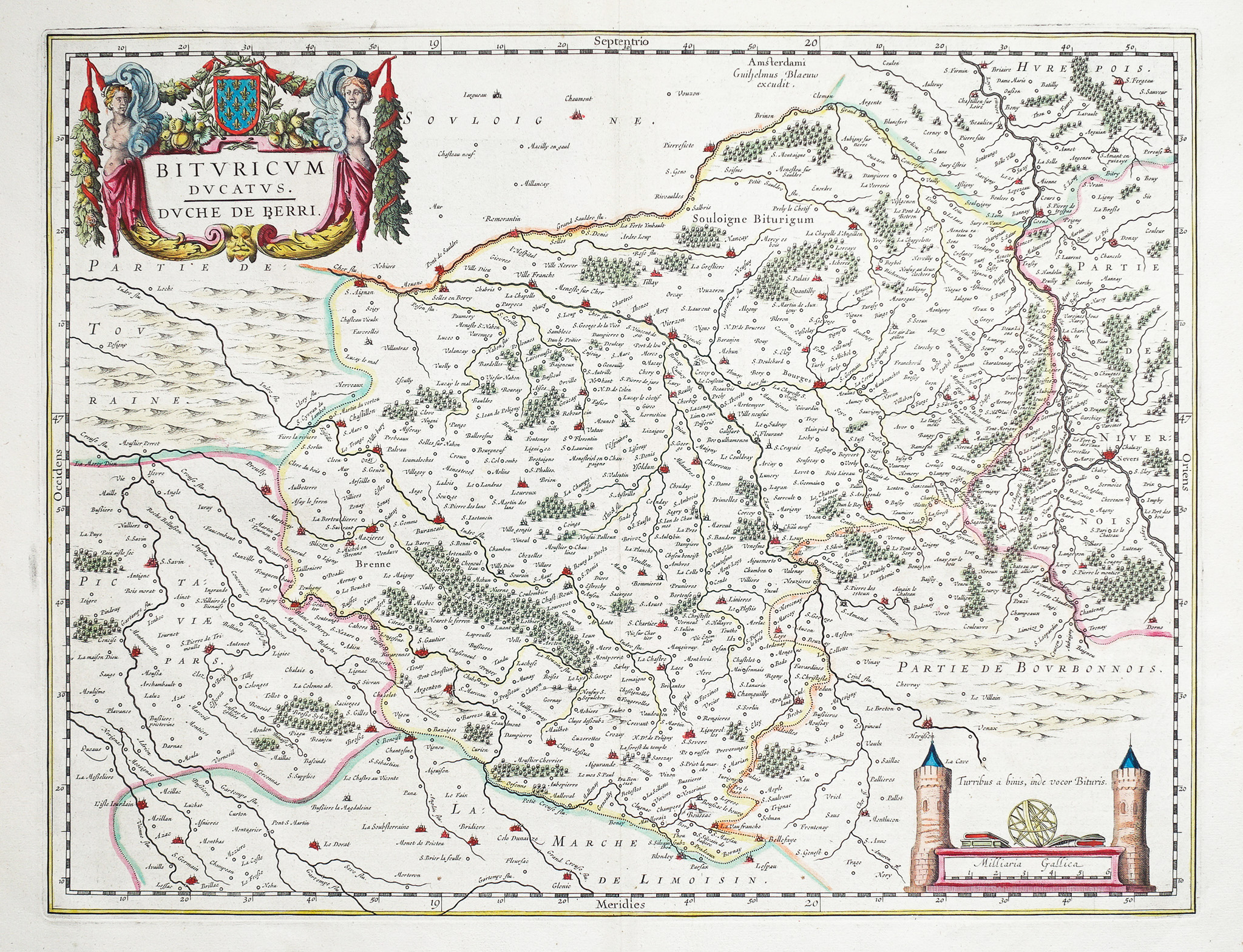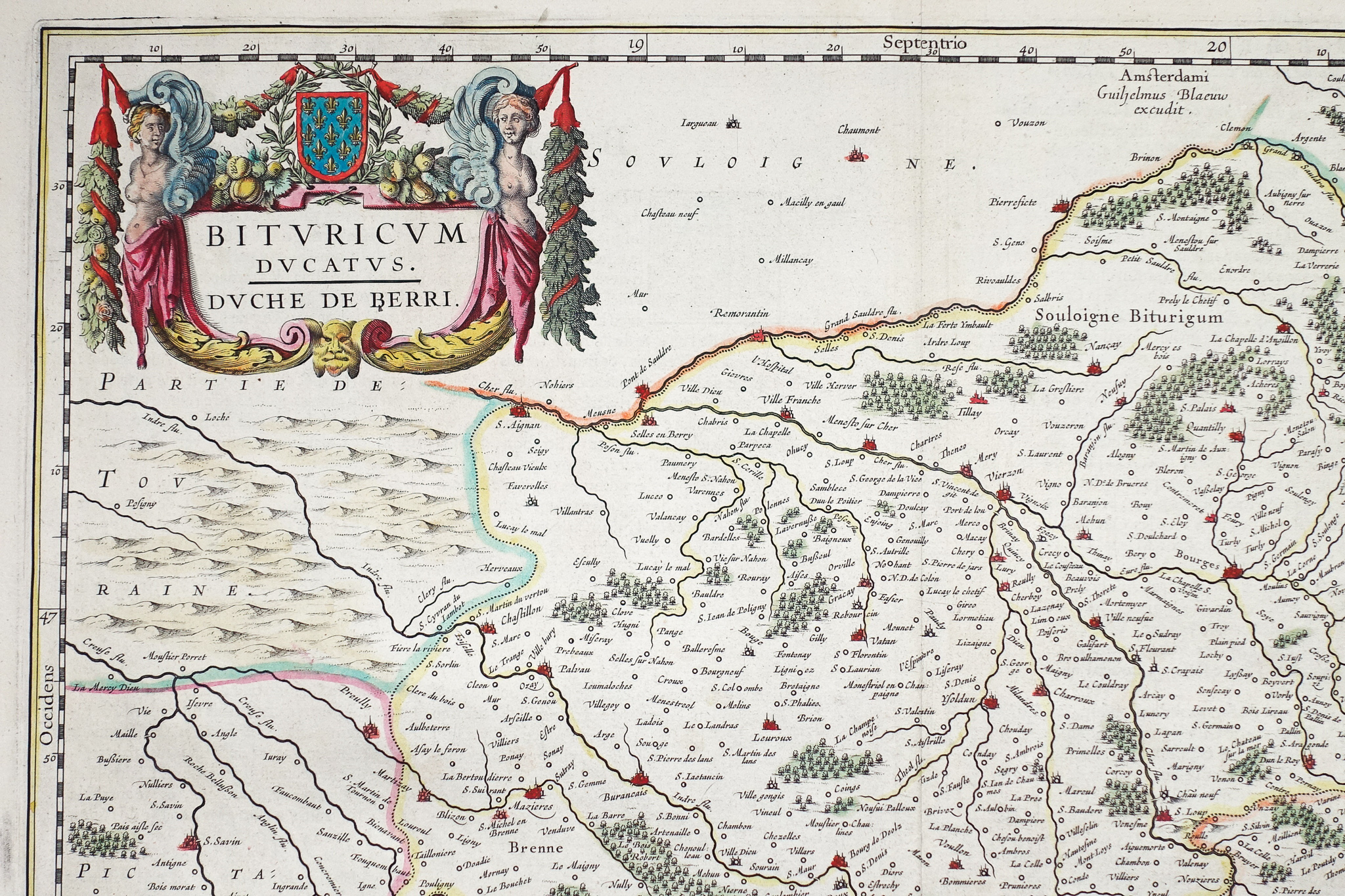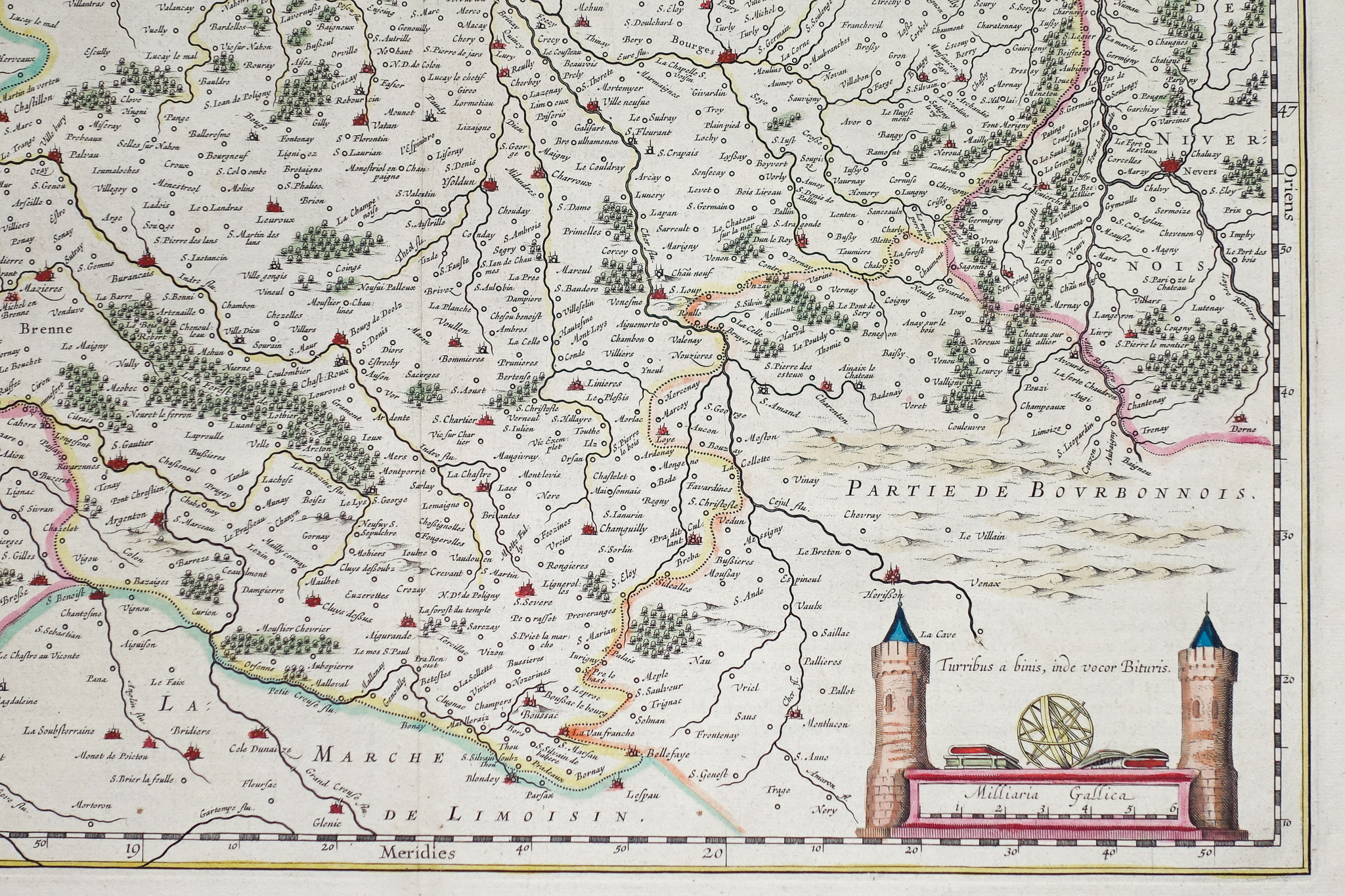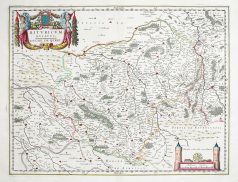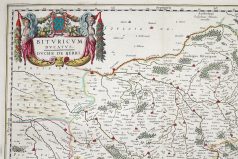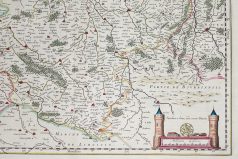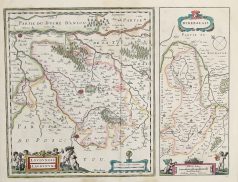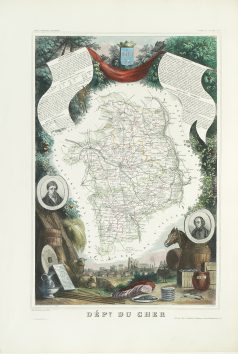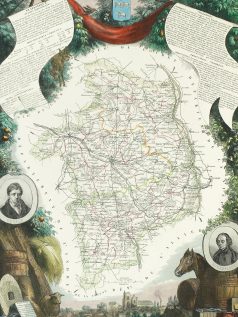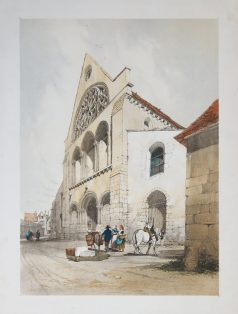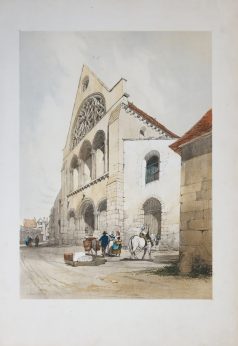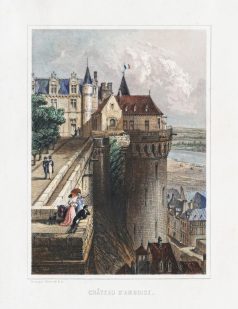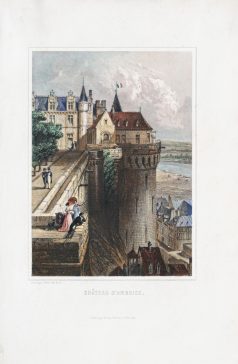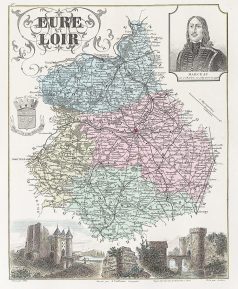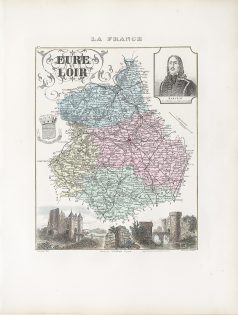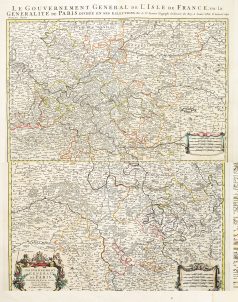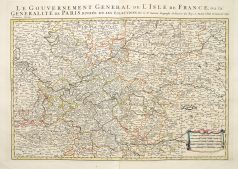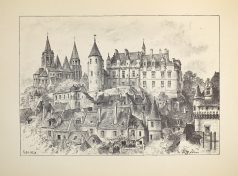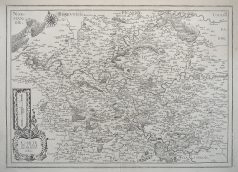Carte géographique ancienne – Duché de Berry – Blaeu Guilhem Cartographe – Antique map
Épreuve originale gravée sur cuivre vers 1650.
Beaux coloris anciens.
Très bon état.
Explication en latin au verso.
Format feuille : 60 x 50 cm.
Format gravure : 50 x 39 cm.
Original antique map of 1650
Vendu/sold
DEMANDE D'INFORMATION
Blaeu
Au début du dix-septième siècle, Amsterdam est en train de devenir l’une des villes les plus commerçantes d’Europe, base de la Compagnie néerlandaise des Indes orientales, centre bancaire européen et du commerce du diamant. Ses habitants se distinguaient par leurs compétences intellectuelles et leur savoir-faire exceptionnel.
En cette période propice de l’histoire des provinces du Nord, Willem Janszoon Blaeu, né à Alkmaar en 1571 est formé à l’astronomie et aux sciences par Tycho Brahe, le célèbre astronome danois qui fonda une entreprise à Amsterdam en 1599 de fabrication de globes et d’instruments scientifiques.
L’entreprise ne tarde pas à prendre de l’expansion, publiant des cartes, des ouvrages topographiques, des livres de cartes marines et des collections de globes. Ses premiers travaux les plus remarquables sont une carte de la Hollande (1604), une belle carte du monde (1605-06) et Het Licht der Zeevaerdt (La lumière de la navigation), un atlas marin.
Au même moment, Blaeu préparait un atlas majeur destiné à inclure les cartes les plus récentes de l’ensemble du monde connu, mais la progression d’un si vaste projet reste lente, malgré l’achat onéreux de 40 cuivres de cartes de l’édition de Mercator ainsi que le fond de cuivre de la publication de cartes de Jodocus Hondius. En 1630, un volume de 60 cartes portant le titre Atlantis Annex fut publié. Cinq années se sont écoulées avant la publication des deux premiers volumes de son atlas mondial, Atlas Novus ou le Theatrum Orbis Terrarum.
À la même époque, Blaeu fut nommé hydrographe de la Compagnie des Indes orientales.
En 1638, Blaeu mourut et l’entreprise passa aux mains de ses fils, Joan et Cornelis, qui poursuivirent et élargirent les ambitieux projets de leur père.
Après la mort de Cornelis, Joan dirigea l’entreprise seul et une collection de cartes en 6 volumes fut finalement achevée vers 1655.
La préparation d’une collection encore plus grande, Atlas Major, vit le jour et fut publié en 1662 en 9 volumes puis 11 volumes et enfin 12 volumes pour l’édition avec texte français.
Cette collection réunissait près de 6oo cartes double page et 3000 textes explicatifs au verso des cartes.
C’était et reste l’œuvre la plus magnifique jamais réalisée en son genre; son contenu géographique n’était peut-être pas aussi à jour ni aussi exact que son auteur l’aurait souhaité, mais toute carence dans cette direction était plus que compensée par la finesse des gravures et leurs coloration,
les cartouches élaborés, les détails picturaux et héraldiques en particulier et la splendide calligraphie.
En 1672, un incendie détruisit l’imprimerie de Blaeu dans la Gravenstraat et un an après, Joan Blaeu décéda.
Les stocks de cartes restants furent progressivement dispersés. Certains des cuivres d’impression ont été achetés par les cartographes, F. de Wit, Schenk et Valck, avant la fermeture définitive vers 1695.
Il convient de mentionner ici qu’il existe souvent une confusion entre l’aîné Blaeu et son rival Jan Jansson (Johannes Janssonius). Jusqu’en 1619, Blaeu signa souvent ses œuvres Guilielmus Janssonius ou Willems Jans Zoon, mais après cette période, il semble avoir opté pour Guilielmus ou G. Blaeu.
At the beginning of the seventeenth century Amsterdam was becoming one of the wealthiest trading cities in Europe, the base of the Dutch East India Company and a centre of banking and the diamond trade, its people noted for their intellectual skills and splendid craftsmanship.
At this propitious time in the history of the Northern Provinces, Willem Janszoon Blaeu, who was born at Alkmaar in 1571 and trained in astronomy and the sciences by Tycho Brahe, the celebrated Danish astronomer, founded a business in Amsterdam in 1599 as a globe and instrument maker. It was not long before the business expanded, publishing maps, topographical works and books of sea charts as well as constructing globes. His most notable early work was a map of Holland (1604), a fine World Map (1605-06) and Het Licht der Zeevaerdt (The Light of Navigation), a marine atlas, which went through many editions in different languages and under a variety of titles. At the same time Blaeu was planning a major atlas intended to include the most up-to-date maps of the whole of the known world but progress on so vast a project was slow and not until he bought between 30 and 40 plates of the Mercator Atlas from Jodocus Hondius II to add to his own collection was he able to publish, in 1630, a 60-map volume with the title Atlantis Appendix. It was another five years before the first two volumes of his planned world atlas, Atlas Novus or the Theatrum Orbis Terrarum were issued. About this time he was appointed Hydrographer to the East India Company.
In 1638 Blaeu died and the business passed into the hands of his sons, Joan and Cornelis, who continued and expanded their father’s ambitious plans. After the death of Cornelis, Joan directed the work alone and the whole series of 6 volumes was eventually completed about 1655. As soon as it was finished he began the preparation of the even larger work, the Atlas Major, which reached publication in 1662 in II volumes (later editions in 9-12 volumes) and contained nearly 6oo double-page maps and 3,000 pages of text. This was, and indeed remains, the most magnificent work of its kind ever produced; perhaps its geographical content was not as up-to-date or as accurate as its author could have wished, but any deficiencies in that direction were more than compensated for by the fine engraving and colouring, the elaborate cartouches and pictorial and heraldic detail and especially the splendid calligraphy.
In 1672 a disastrous fire destroyed Blaeu’s printing house in the Gravenstraat and a year afterwards Joan Blaeu died. The firm’s surviving stocks of plates and maps were gradually dispersed, some of the plates being bought by F. de Wit and Schenk and Valck, before final closure in about 1695.
It ought to be mentioned here that there is often confusion between the elder Blaeu and his rival Jan J ansson (Johannes Janssonius). Up to about 1619 Blaeu often signed his works Guilielmus Janssonius or Willems Jans Zoon but after that time he seems to have decided on Guilielmus or G. Blaeu.
Produits similaires
Centre & val de Loire
Épreuve originale réalisée en 1638. Johannes Janson cartographe. Beaux coloris aquarelle anciens. Texte explicatif en latin au verso. Très bon état. Format feuille : 52,8 x 45 cm Format gravure : 49,6 x 37,5 cm Original antique map of 1638
Centre & val de Loire
Carte originale gravée en 1860. Beaux coloris aquarelle. Très bon état. Format feuille : 53 x 36,5 cm. Célèbre édition du milieu du 19ème siècle publiée rue Saint Jacques à Paris, illustrée de commentaires sur les divisions administratives, curiosités, production, commerce et célébrités.
Centre & val de Loire
Eglise Saint André. Epreuve gravée en 1840. Thomas Boys lithographe. Coloris aquarelle. Très bon état. Format feuille : 49 x 34,5 cm. Format gravure : 37,5 x 27 Original antique lithography of 1840. Belle épreuve éditée avant la lettre (impression avant la mise en place du titre définitif). Imprimée en deux tons avec points de repérage aux 4 coins de l’épreuve.
Centre & val de Loire
Epreuve originale gravée vers 1860. Rouargue frères auteurs. Coloris aquarelle. Très bon état. Format feuille : 26 x 17 cm. Format cuivre : 19 x 14 cm. Original antique engraving around 1860
Centre & val de Loire
Carte géographique ancienne du département de l’Eure et Loir
Carte originale gravée en 1880. Beaux cartouches colorés à l’aquarelle. Très bon état. Format feuille : 34,5 x 26 cm. Original antique map of 1880. Edition de la fin du 19ème siècle, gravée par Alès, illustrant les départements français et d’Outre-mer, agrémentée de vignettes aquarellées du chef-lieu, curiosités et personnages célèbres.
Bourgogne & Franche Comté
Le Gouvernement Général de l’Isle de France ; ou la Généralité de Paris divisée en ses élections. 2 cartes originales gravées en 1692. Sanson d’Abeville & Hubert Jaillot cartographes. Coloris aquarelle de l’époque. Très bon état. Format feuille : 96 x 63 cm (chaque carte). Format gravure : 67 x 48 cm (chaque carte). Ces deux cartes peuvent être assemblées sur demande. Original antique map of 1692
Centre & val de Loire
Lithographie originale de A. Robida éditée vers 1880. Tirage à 125 exemplaires - Épreuve hors-commerce. Excellent état. Format feuille : 50,2 x 32,5 cm. Original lithography of 1880
Centre & val de Loire
Carte originale gravée en 1634. Tassin cartographe. Très bon état. Format feuille : 55 x 42 cm. Format gravure : 52 x 37,5 cm Original antique map of 1634

